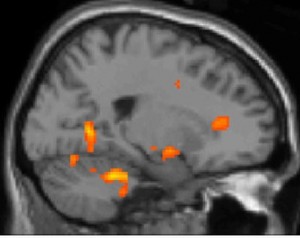The mind tend to wander when working at repetitive tasks that don’t require much brain processing. So the brain just switches over to thinking about long-term things. There is even a specific part of the brain, called the “default network” that starts up when we zone-out. That, at least, is what I summarize from looking at some neuroscience research by Malia Mason and others (2007) on wandering minds.
What’s interesting is that the default network tends to be used for “certain kinds of self-referential thinking, such as reflecting on personal experiences or picturing yourself in the future” (Zimmer, 2010). That means introspection. Introspection is the point of Personal World, so it follows that we should want our students’ minds to wander during Personal World.
So how do we design the Personal World time and environment to encourage daydreaming? Repetitive tasks aid mind-wandering, as will anything that is rote that does not require acute cognitive focus. Raking the garden, doodling should be encouraged, in fact, anything that encourages boredom.
I would think also, that reducing the cognitive load would also be beneficial, which might also mean no music. Yet music helps isolate the individual, particularly when they’re using ear buds. Perhaps quiet, “boring” sounds would be best, coming a shared radio so students can’t choose to listen to something else. Of course, if you’re listening to the music on your mp3 player then you tend to tune out the songs anyway so maybe it all falls out in the wash.
Of course this could all be malarkey, based as it is on a single study, so I’ll end with the words of caution that coms at the end of the article:
Although the thoughts the mind produces when wandering are at times useful, such instances do not prove that that the mind wanders because these thoughts are adaptive; on the contrary the mind may wander simply because it can. – Mason et al., 2007.

